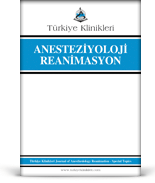Basınç yarası, uzun yıllardır sağlık alanında önemli bir bakım sorunu olarak karşımıza çıkmaktadır. Yoğun bakım ünitelerinde daha çok görülen basınç yaralarının önemli bir kısmı tıbbi cihaza bağlı gelişmektedir. Tanı veya tedavi amaçlı kullanılan tıbbi cihazlar erişkin/pediatrik yoğun bakım, travma üniteleri gibi hastane alanlarında daha fazla kullanılmaktadır. Tıbbi cihazlara bağlı basınç yaraları (TCBBY), hastane ortamında meydana gelen tüm basınç yaralarının %30'undan fazlasını oluşturmaktadır. Bu yaralar genellikle cihazın şeklini almakta ve cihazların çevresinde veya altında meydana gelmektedir. Tüm tıbbi cihazlar potansiyel olarak basınç yarasına neden olabilir. Tıbbi cihaza bağlı basınç yaraları enfeksiyon, doku nekrozu gibi birçok komplikasyona neden olabilmekte ve bu nedenle de bakım maliyetini artırabilmektedir. Tıbbi cihazın hastanın tedavisinin bir bileşeni olması nedeni ile bu tür yaraları; önlemek klasik bir basınç yarasını önlemekten daha karmaşık hâle gelmektedir. Bununla birlikte; Braden Ölçeği, Waterlow Ölçeği gibi mevcut basınç yarası risk değerlendirme araçları TCBBY riskinin öngörülmesinde yetersiz kalmaktadır; çünkü bu araçlar, cihazların hareketliliğinden ziyade hastanın hareketsizliğine odaklanmaktadır. Bu nedenle hekim veya hemşirenin basınç yarasını değerlendirirken TCBBY'yi ayrı olarak gözlemlemesi ve kaydetmesi önemlidir. Bu durumda sağlık profesyonellerinin TCBBY'ye ilişkin farkındalığını artırmak esastır. Bu çalışmada, TCBBY'ye ilişkin özellikler, kanıta dayalı önleme ve iyileştirme stratejileri tartışılarak sağlık profesyonellerinin farkındalığını artırmak ve konu ile ilgili literatürdeki eksikliği gidermek amaçlanmıştır.
Anahtar Kelimeler: Basınç yarası; tıbbi cihaz; yoğun bakım
Pressure injuries have been an important health problem for many years. Most of the pressure injuries encountered in intensive care units are due to medical devices. Medical tools used for diagnostic or therapeutic purposes are more widely used in hospital areas such as adult/pediatric intensive care and trauma units. Medical device related pressure injury (MDRPI) account for more than 30% of all pressure injuries occurring in the hospital environment. These injuries generally take the form of the device and occur around or under the device. All medical devices can potentially cause pressure sores. Medical device related pressure injuries can cause many complications such as infection, tissue necrosis and thus increase the cost of care. Because the medical device is a component of the patient's treatment, preventing such injuries becomes more complex than preventing a conventional pressure injury. However, existing pressure injury risk assessment tools such as the Braden Scale and the Waterlow Scale are insufficient to predict the risk of MDRPI because these tools focus on the patient's inactivity rather than the mobility of the devices. Therefore, it is important that the physicians or nurses observe and record the MDRPI separately when evaluating the pressure injury. In this case, it is essential to raise the awareness of health professionals regarding MDRPI. In this review, it is aimed to raise awareness of health professionals and to eliminate the lack of literature in the subject by discussing the features of MDRPI, evidence-based prevention and improvement strategies.
Keywords: Pressure injury; medical device; intensive care
- Edsberg LE, Black JM, Goldberg M, McNichol L, Moore L, Sieggreen M. Revised national pressure ulcer advisory panel pressure injury staging system: revised pressure injury staging system. J Wound Ostomy Continence Nurs. 2016;43(6):585-97. [Crossref] [PubMed] [PMC]
- Young M. Medical device-related pressure ulcers: a clear case of iatrogenic harm. Br J Nurs. 2018;27(15):S6-S13. [Crossref] [PubMed]
- Kayser SA, VanGilder CA, Ayello EA, Lachenbruch C. Prevalence and analysis of medical device-related pressure injuries: results from the international pressure ulcer prevalence survey. Adv Skin Wound Care. 2018;31(6):276-85. [Crossref] [PubMed] [PMC]
- Black JM, Kalowes P. Medical device-related pressure ulcers. Chronic Wound Care Management and Research. 2016;3:91-9. [Crossref]
- Delmore BA, Ayello EA. CE: Pressure injuries caused by medical devices and other objects: a clinical update. Am J Nurs. 2017;117(12):36-45.
- Baharestani MM, Ratliff CR. Pressure ulcers in neonates and children: an NPUAP white paper. Adv Skin Wound Care. 2007;20(4):208-20. [Crossref] [PubMed]
- Schlüer AB, Schols JM, Halfens RJ. Risk and associated factors of pressure ulcers in hospitalized children over 1 year of age. J Spec Pediatr Nurs. 2014;19(1):80-9. [Crossref] [PubMed]
- Davis JW, Parks SN, Detlefs CL, Williams GG, Williams JL, Smith RW. Clearing the cervical spine in obtunded patients: the use of dynamic fluoroscopy. J Trauma. 1995;39(3):435-8. [Crossref] [PubMed]
- Curley MA, Quigley SM, Lin M. Pressure ulcers in pediatric intensive care: incidence and associated factors. Pediatr Crit Care Med. 2003;4(3):284-90. [Crossref] [PubMed]
- VanGilder C, Amlung S, Harrison P, Meyer S. Results of the 2008-2009 International Pressure Ulcer Prevalence Survey and a 3-year, acute care, unit-specific analysis. Ostomy Wound Manage. 2009;55(11):39-45.
- Black JM, Cuddigan JE, Walko MA, Didier LA, Lander MJ, Kelpe MR. Medical device related pressure ulcers in hospitalized patients. Int Wound J. 2010;7(5):358-65. [Crossref] [PubMed]
- Apold J, Rudrych D. Preventing device-related pressure ulcers: using data to guide statewide change. J Nurs Care Qual. 2012;27(1):28-34. [Crossref] [PubMed]
- Arnold-Long M, Ayer M, Borchert K. Medical device-related pressure injuries in long-term acute care hospital setting. J Wound Ostomy Continence Nurs. 2017;44(4):325-30. [Crossref] [PubMed]
- Kim JY, Lee YJ. Medical device-related pressure ulcer (MDRPU) in acute care hospitals and its perceived importance and prevention performance by clinical nurses. Int Wound J. 2019;16 Suppl 1:51-61. [Crossref] [PubMed]
- Jackson D, Sarki AM, Betteridge R, Brooke J. Medical device-related pressure ulcers: a systematic review and meta-analysis. Int J Nurs Stud. 2019;92:109-20. [Crossref] [PubMed]
- Galetto SGS, Nascimento ERP, Hermida PMV, Malfussi LBH. Medical device-related pressure injuries: an integrative literature review. Rev Bras Enferm. 2019;72(2):505-12. [Crossref] [PubMed]
- National Pressure Ulcer Advisory Panel, European Pressure Ulcer Advisory Panel and Pan Pacific Pressure Injury Alliance. In: Haesler E, ed. Prevention and Treatment of Pressure Ulcers: Clinical Practice Guideline. 2th ed. Cambridge Media: Osborne Park, Western Australia; 2014. p.2-288.







.: Process List